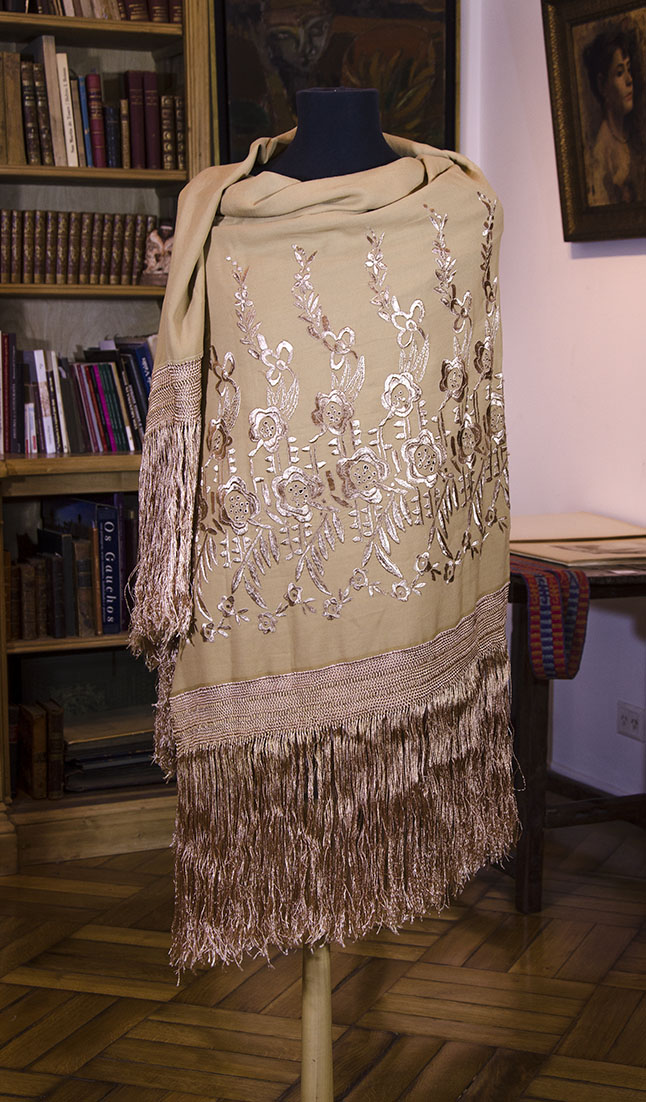BACK TO TOP
TEXTILES
La Paz shawl. La Paz, Bolivia. Early 20th century.
Made with cotton native to Peru, the recurring floral design has been entirely hand-embroidered with silk threads; while the small bird that frames it was hand-knotted with twisted silk threads that end in a cascade of free fringes, whose shine sparkles with light reflections with each movement. Measures. Length: 132 cm. Width: 114 cm. Without considering the fringe, whose threads measure approximately 15 cm.
This garment of great aesthetic distinction, used by the cholas from La Paz, traces its origins to an ordinance of the Spanish crown that indicated suppressing the identity of the South American aborigines, prohibiting their native clothing, after quelling the uprisings of Túpac Amaru and Túpac Katari in 1783. , as affirmed by the writer and folklorist from Cochabamba Antonio Paredes Candia: "(...) But the most outstanding changes in clothing occurred after the uprising of Tupac Amaru, when the visitor José Arreche prohibited the natives from wearing national clothing , that could bring to their memory, the ancient Inca memories (...) He also imposed on them that they wear the clothing that was used in the provinces of Spain (...)" [1]
Among the items of European clothing that they had to adopt were shawls and the one from Manila in particular was the one that caused the greatest impact due to its great visual appeal. Not a century had passed since the royal order, when the Creole from La Paz incorporated it into this South American version as her luxury outfit.
Since ancient times it has been called "chest blanket" (...) There are chest blankets and those on top or coat. The chest ones are very expensive, with silk embroidery, and the coat ones are made of fine wool. (...) The chest blanket was thin and very fine, it had handmade floral embroidery and the undoubted macramé. The blanket on top was thicker, made of cashmere cotton, it covered up to the middle of the skirt or also loose as a shawl, generally used by older or married ladies. (two)
Notes:
1. María Lisette Canavesi de Sahonero, El traje de la chola paceña, Ed. Los Amigos del Libro, La Paz, Bolivia, 1987, p. 17.
2. Ibid., p. 40.
Are you interested in selling some works?
Send us an email briefly indicating
which works you intend to put on sale, and we will respond. click here
Subscribe to our newsletter to be updated.
Check our Newsletters